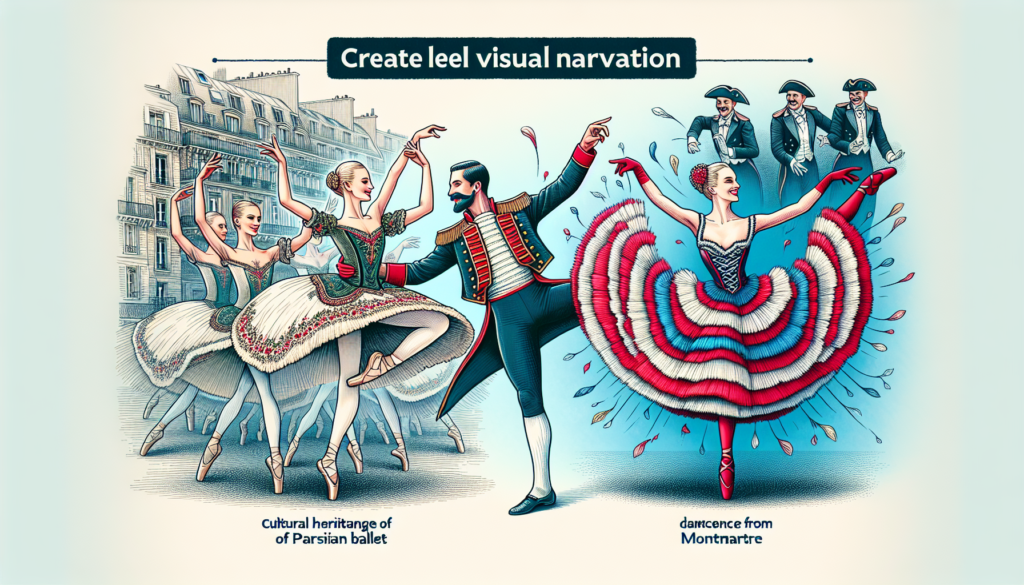Did you know that France is home to some of the most iconic and influential dance forms in the world? From the elegant and graceful ballet to the vibrant and energetic cancan, French dance has made a lasting impact on the global stage. Whether you’re a dance enthusiast or simply curious about the art form, exploring the famous dance forms originating from France promises an enchanting journey through history and culture. Join us as we delve into the captivating world of French dance and discover the elegance, passion, and creativity that have made these dance forms so renowned worldwide.
1. Ballet
Ballet, an elegant and refined dance form, has a rich history that originated in the royal courts of Renaissance Italy. However, it was in France that ballet truly flourished and became a part of the national culture. During the Renaissance, ballet was primarily used as a form of entertainment for the French aristocracy, and it gradually evolved into a highly stylized and structured art form.
a. History of ballet
The history of ballet can be traced back to the Italian Renaissance, with the creation of court ballets in the 15th and 16th centuries. These early ballets were lavish spectacles that combined dance, music, poetry, and elaborate costumes. In the 17th century, French King Louis XIV played a crucial role in the development of ballet by establishing the Académie Royale de Danse in 1661. This institution laid the foundation for the professionalization of ballet and the establishment of specific rules and techniques.
b. Development of ballet in France
Under Louis XIV’s patronage, ballet became an essential part of the French court and a symbol of royal power. French ballet masters, such as Pierre Beauchamp and Jean-Baptiste Lully, further refined the techniques and established the five positions of the feet that are still used in classical ballet today. The Romantic era in the 19th century witnessed the rise of ballet as a theatrical art form, with renowned choreographers like Jean-Baptiste de La Juranville and Marius Petipa creating iconic ballets that continue to be performed worldwide.
c. Classical ballet repertoire
The classical ballet repertoire is a collection of timeless ballets that have captivated audiences for centuries. Some of the most famous ballets originated in France, including “Swan Lake,” “The Sleeping Beauty,” and “Giselle.” These ballets showcase the technical prowess of dancers, the beauty of the choreography, and the emotional depth of the storytelling. The French influence on the repertoire is evident in the precision and elegance of the movements, as well as the incorporation of mime and storytelling elements.
d. Famous ballet companies in France
France is home to several world-renowned ballet companies that have contributed significantly to the development and promotion of ballet as an art form. The Paris Opera Ballet, founded in 1669, is one of the oldest and most prestigious ballet companies in the world. It has nurtured and produced many legendary dancers, such as Sylvie Guillem and Rudolf Nureyev. Other notable ballet companies in France include the Ballet du Rhin, the Ballet Preljocaj, and the Ballet de l’Opéra National de Bordeaux.
2. Can-Can
The Can-Can, a lively and energetic dance, originated in the working-class ballrooms of mid-19th century Paris. This high-spirited dance quickly gained popularity and became a symbol of the joie de vivre associated with French culture. With its exuberant kicks and high leg lifts, the Can-Can remains an iconic dance form that continues to captivate audiences worldwide.
a. History of the Can-Can
The Can-Can emerged in the 1830s as a rebellious dance performed by courtesans in the dance halls of Montmartre, a bohemian neighborhood in Paris. Its origin can be traced back to a traditional French dance called the Quadrille, which was adapted and transformed by the working-class dancers. The Can-Can gained notoriety for its provocative and energetic nature, challenging the societal norms of the time.
b. Characteristics of the Can-Can
The Can-Can is characterized by its vivacious and high-energy movements, such as high leg kicks, splits, and cartwheels. Dancers often wear distinctive costumes, featuring frilly skirts, corsets, and petticoats, which accentuate the movements and add to the visual spectacle of the dance. The music accompanying the Can-Can is typically fast-paced and lively, enhancing the energetic atmosphere of the performance.
c. Influence of the Can-Can on popular culture
The Can-Can’s infectious energy and playful spirit quickly captured the imagination of the public, leading to its widespread popularity. The dance became synonymous with French culture and was featured prominently in various forms of entertainment, including cabarets, music halls, and even early films. The Can-Can’s influence on popular culture can still be seen today, with references and adaptations of the dance appearing in movies, musicals, and even fashion.
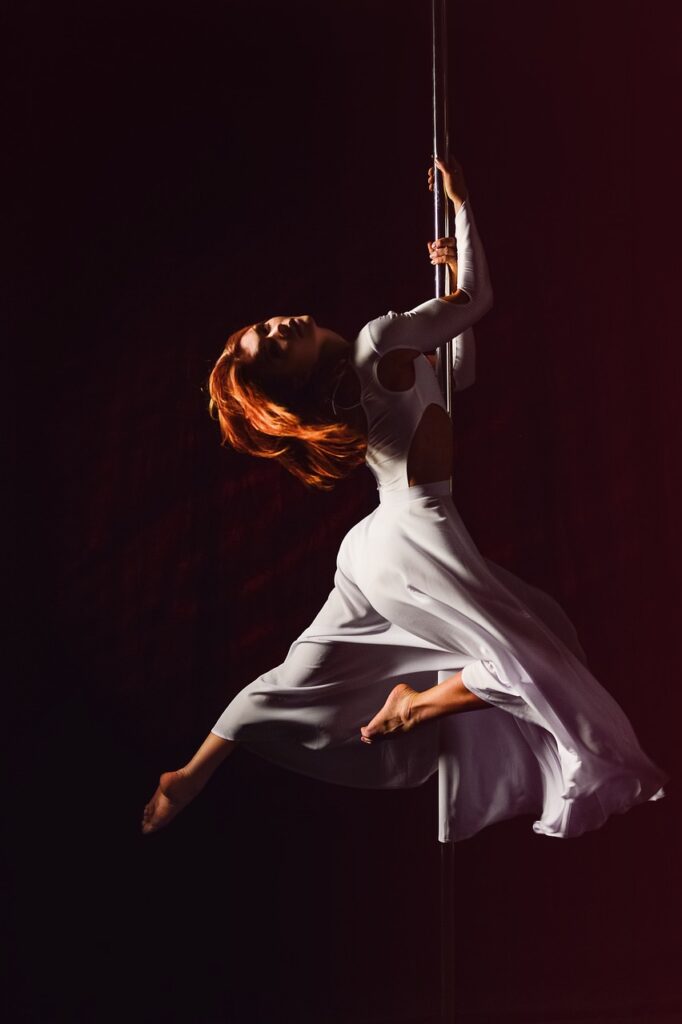
3. Tango
The Tango, a passionate and sensual dance, originated in the late 19th century in the working-class neighborhoods of Buenos Aires, Argentina. However, it was in France that the Tango gained international recognition and underwent significant transformations. The French interpretation of the Tango added elegance and refinement to the dance, making it popular among the upper classes.
a. History of Tango
The Tango has its roots in the diverse cultural melting pot of Buenos Aires, where African, European, and Indigenous influences converged. Initially, the Tango was associated with the lower classes and was seen as a scandalous and risqué dance. However, with the arrival of the Tango in Paris in the early 20th century, it underwent a transformation and started to gain acceptance among the upper classes.
b. French Tango versus Argentine Tango
The French interpretation of the Tango focused on refinement and elegance, emphasizing intricate footwork and precise movements. This style, known as the “Tango Salon,” incorporated elements of ballet and formalized the dance. In contrast, the Argentine Tango remained true to its original roots, emphasizing improvisation and the deep connection between partners. Both styles have their unique charms and continue to be celebrated and performed worldwide.
c. Tango festivals and events in France
France is home to numerous Tango festivals and events that attract Tango enthusiasts from around the world. One of the most prestigious events is the Festival de Tango de Tarbes, held annually in Tarbes. This festival features performances, workshops, and social dances, providing a platform for both professional dancers and amateurs to showcase their skills and passion for the Tango. Other notable Tango events in France include the Festival de Tango de Montréal and the International Tango Festival of Toulouse.
4. Gavotte
The Gavotte is a traditional French dance that originated in the 16th century. Known for its graceful and lively character, the Gavotte has evolved over the centuries and continues to be enjoyed as both a historical dance and a modern entertainment.
a. History of the Gavotte
The Gavotte originated in the Renaissance period as a courtly dance performed by aristocrats and nobility. It was characterized by its lively tempo and structured choreography. Over time, the Gavotte became popular in rural communities and underwent regional variations, adapting to local customs and traditions.
b. Steps and characteristics of the Gavotte
The Gavotte is typically performed in pairs and features intricate footwork, elegant arm movements, and refined postures. Dancers move in a graceful and precise manner, often incorporating hops and skips to give the dance a lively and dynamic flair. The music accompanying the Gavotte is usually in 4/4 time and is played on traditional instruments like the harpsichord or violin.
c. Modern interpretations of the Gavotte
While the Gavotte is rooted in tradition, modern interpretations of the dance embrace creativity and experimentation. Contemporary choreographers and dance companies often incorporate elements from other dance styles, such as ballet or contemporary dance, adding a fresh and innovative twist to the Gavotte. These modern interpretations breathe new life into the Gavotte, ensuring its continued relevance and popularity in the 21st century.
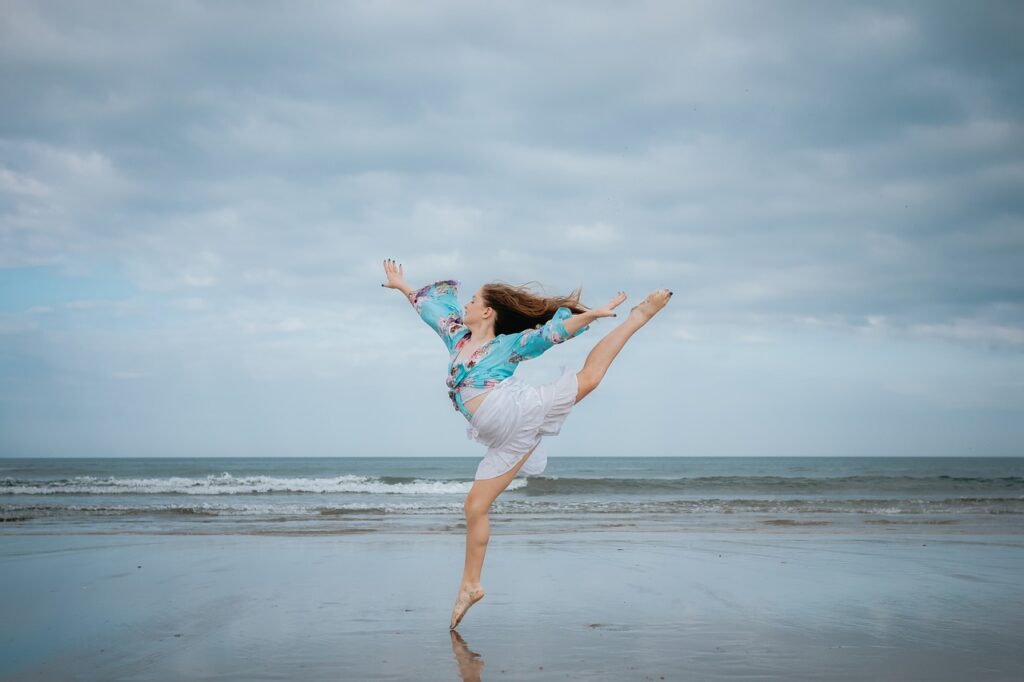
5. Contemporary Dance
Contemporary dance, a dynamic and expressive art form, has experienced significant growth and recognition in France. With its emphasis on artistic exploration and personal expression, contemporary dance has become a vital component of the country’s vibrant dance scene.
a. Rise of contemporary dance in France
The rise of contemporary dance in France can be attributed to a shift in artistic sensibilities and the desire to break free from the constraints of classical ballet. In the late 20th century, influential choreographers such as Maurice Béjart and Angelin Preljocaj began pushing the boundaries of traditional dance forms and experimenting with new movement vocabularies. This marked the beginning of a new era for contemporary dance in France.
b. Influential French contemporary dancers
France has produced numerous influential contemporary dancers who have made a significant impact on the international dance community. One such dancer is Sylvie Guillem, known for her technical prowess and versatility. Guillem’s innovative and expressive style revolutionized contemporary dance and inspired a new generation of dancers. Other notable French contemporary dancers include Mathilde Monnier, Merce Cunningham, and Benjamin Millepied.
c. French contemporary dance companies
France is home to several world-renowned contemporary dance companies that showcase the diversity and creativity of the art form. The Centre Chorégraphique National de Montpellier, led by Mathilde Monnier, is known for its avant-garde productions and collaborations with artists from various disciplines. Another prominent company is the Ballet Preljocaj, directed by Angelin Preljocaj, which combines classical ballet techniques with contemporary movement aesthetics. These companies, along with many others, contribute to the vibrant and thriving contemporary dance scene in France.
6. Flamenco
Flamenco, a passionate and emotive dance form, has had a significant influence on French culture and the arts. From its roots in Andalusian Spain to its integration into French artistic expression, Flamenco has left an indelible mark on the dance landscape of France.
a. Influence of Flamenco in France
The influence of Flamenco in France can be traced back to the 19th century when Spanish Romani immigrants brought their rich cultural traditions with them. Flamenco quickly captivated French audiences with its vibrant rhythms, intricate footwork, and impassioned performances. French artists and intellectuals, such as Frédéric Chopin and Prosper Mérimée, were inspired by the passion and authenticity of Flamenco, incorporating elements of the dance into their own works.
b. French Flamenco artists
France has seen the emergence of many talented Flamenco artists who have contributed significantly to the development and popularization of Flamenco in the country. One notable French Flamenco dancer is Carmen Amaya, who rose to fame in the mid-20th century with her electrifying performances and innovative choreography. Other French Flamenco artists, such as Antonio Gades and María Pagés, have also made substantial contributions to the art form, infusing it with their unique artistic visions.
c. Flamenco festivals in France
Flamenco festivals are vibrant celebrations of this expressive art form and provide a platform for artists to showcase their talents. France is home to several Flamenco festivals that attract artists and enthusiasts from around the world. The Nîmes Flamenco Festival, held annually in the city of Nîmes, showcases a diverse range of Flamenco performances, from traditional to contemporary. The Festival Arte Flamenco de Mont-de-Marsan is another prominent event that celebrates Flamenco’s rich heritage and showcases both established and emerging Flamenco artists.
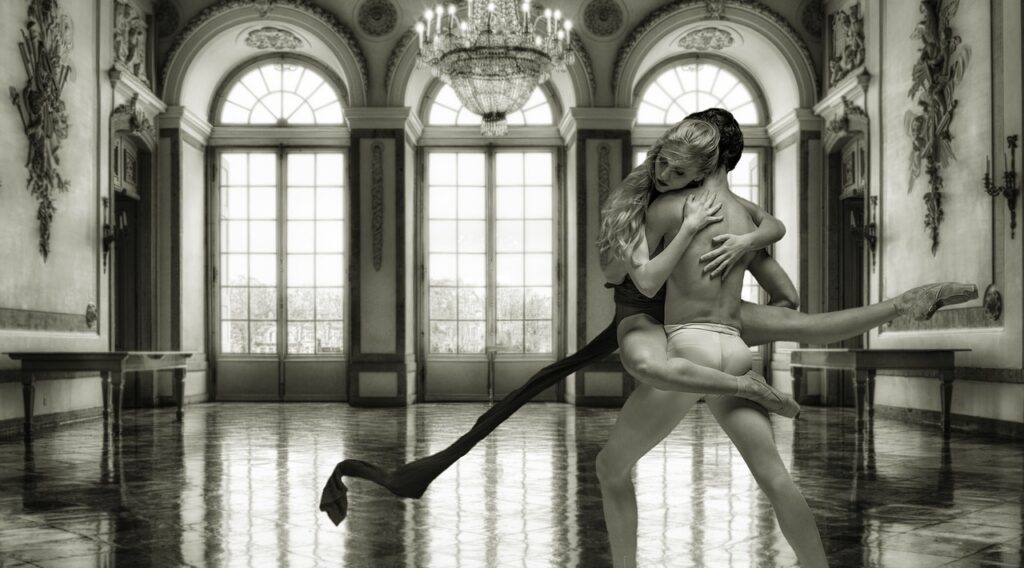
7. Polka
The Polka, a lively and joyful dance characterized by its energetic steps and syncopated rhythm, has a fascinating history and has played a significant role in French dance culture.
a. History and origins of the Polka
The Polka originated in Central Europe in the mid-19th century and quickly spread across Europe, including France. It was a dance that brought people together, transcending social classes and cultural boundaries. The lively and infectious nature of the Polka made it a popular choice for social gatherings and celebrations.
b. Popularization of the Polka in France
The Polka gained popularity in France during the Second French Empire, particularly under the reign of Napoleon III. The dance was embraced by the French middle class and became a staple at balls and social events. The Polka’s exuberant steps and uplifting music provided an opportunity for people to come together and enjoy themselves.
c. Variations of the Polka in French regions
France is a diverse country with distinct regional cultures, and each region has its own unique variation of the Polka. For example, the Auvergne Polka is a traditional folk dance from the Auvergne region, characterized by its lively tempo and spirited footwork. Similarly, the Alsatian Polka from the Alsace region incorporates elements of German and French culture, creating a fusion of styles. These regional variations add to the rich tapestry of French dance culture and demonstrate the versatility of the Polka as a dance form.
8. Clog Dance
The Clog Dance, a rhythmic and percussive form of dance, has its origins in the traditional wooden shoe-clad dances of Europe. France has its own unique variations of the Clog Dance, showcasing the country’s rich cultural heritage.
a. History and origins of the Clog Dance
The Clog Dance can be traced back to the rural communities of Europe, where wooden shoes were commonly worn for practical purposes. Over time, the rhythmic tapping and stomping of these shoes evolved into a form of dance. In France, the Clog Dance became particularly popular in regions like Brittany and Normandy, where wooden clogs were traditionally worn by farmers and laborers.
b. Traditional French clog dances
In France, the Clog Dance has taken on various forms and styles, depending on the region. For example, in Brittany, the Fest-Noz is a traditional dance festival that features lively Clog Dances accompanied by traditional Breton music. Each region has its own unique steps and choreography, showcasing the cultural diversity of France and the evolution of the Clog Dance within different communities.
c. Contemporary adaptations of the Clog Dance
While the Clog Dance has deep roots in tradition, contemporary adaptations have brought new life to this ancient dance form. Modern choreographers and dance companies incorporate elements of the Clog Dance into their performances, blending traditional techniques with contemporary movement aesthetics. This fusion of old and new ensures the continued relevance and popularity of the Clog Dance within the French dance scene.
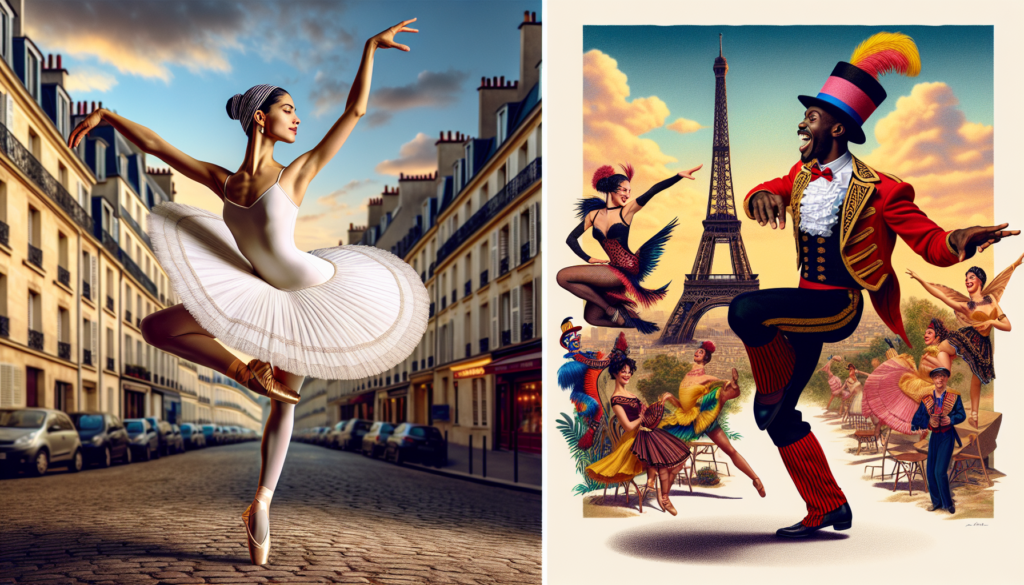
9. Bourrée
The Bourrée, a lively and spirited dance with origins in the French provinces, has a long and storied history. This traditional dance showcases the rich cultural heritage of France and the diversity of regional dance styles.
a. History and origins of the Bourrée
The Bourrée originated in rural France during the 17th century and was popular among peasants and common folk. It is believed to have evolved from earlier dance forms, such as the Branle, and has since become emblematic of the French popular dance tradition. Over time, the Bourrée spread throughout different regions of France, adapting to local customs and developing distinct regional variations.
b. Steps and characteristics of the Bourrée
The Bourrée is characterized by its quick tempo and lively footwork. Dancers often form a circle or line and perform intricate steps, including quick hops and small jumps, while maintaining a lively rhythm. The dance is accompanied by traditional folk music, usually played on instruments such as the accordion, hurdy-gurdy, or fiddle. The joyful and spirited nature of the Bourrée makes it a popular choice for social gatherings and festivals.
c. Regional variations of the Bourrée
France’s diverse regional cultures have given rise to various regional variations of the Bourrée. Each region has its unique steps, music, and costumes, reflecting the distinct traditions and customs of the local communities. For example, the Auvergne Bourrée is characterized by its intricate footwork and lively tempo, while the Burgundy Bourrée is known for its elegant and flowing movements. These regional variations highlight the cultural richness of France and the enduring popularity of the Bourrée as a symbol of folk dance.
10. Mazurka
The Mazurka, a lively and spirited dance originating from Poland, found its way to France in the 19th century and quickly became a popular dance form within the country’s cultural milieu.
a. History and spread of the Mazurka in France
The Mazurka originated in the Mazovia region of Poland and was initially a popular folk dance. However, with its catchy melodies and infectious rhythm, the Mazurka quickly gained popularity in other European countries, including France. The Mazurka’s arrival in France coincided with a period of artistic and cultural exchange, leading to its integration into French dance culture.
b. Dance style and steps of the Mazurka
The Mazurka is characterized by its lively tempo and distinctive rhythm, which consists of three beats in each measure. Dancers perform a series of steps, including hops, turns, and slides, while maintaining the energetic and spirited nature of the dance. The Mazurka’s syncopated rhythm creates an exciting and dynamic atmosphere, making it a favorite for social gatherings and celebrations.
c. Popular Mazurka compositions in France
France has produced numerous Mazurka compositions, often featuring virtuosic piano solos. Polish-French composer Frédéric Chopin, in particular, was renowned for his Mazurkas, which combined elements of Polish folk music with his unique musical style. Chopin’s Mazurkas are widely regarded as some of the finest examples of the genre and have had a lasting impact on the development of the Mazurka as a dance form in France and beyond. Other French composers, such as Camille Saint-Saëns and Maurice Ravel, have also contributed to the Mazurka repertoire, further enriching the French connection to this lively dance form.
